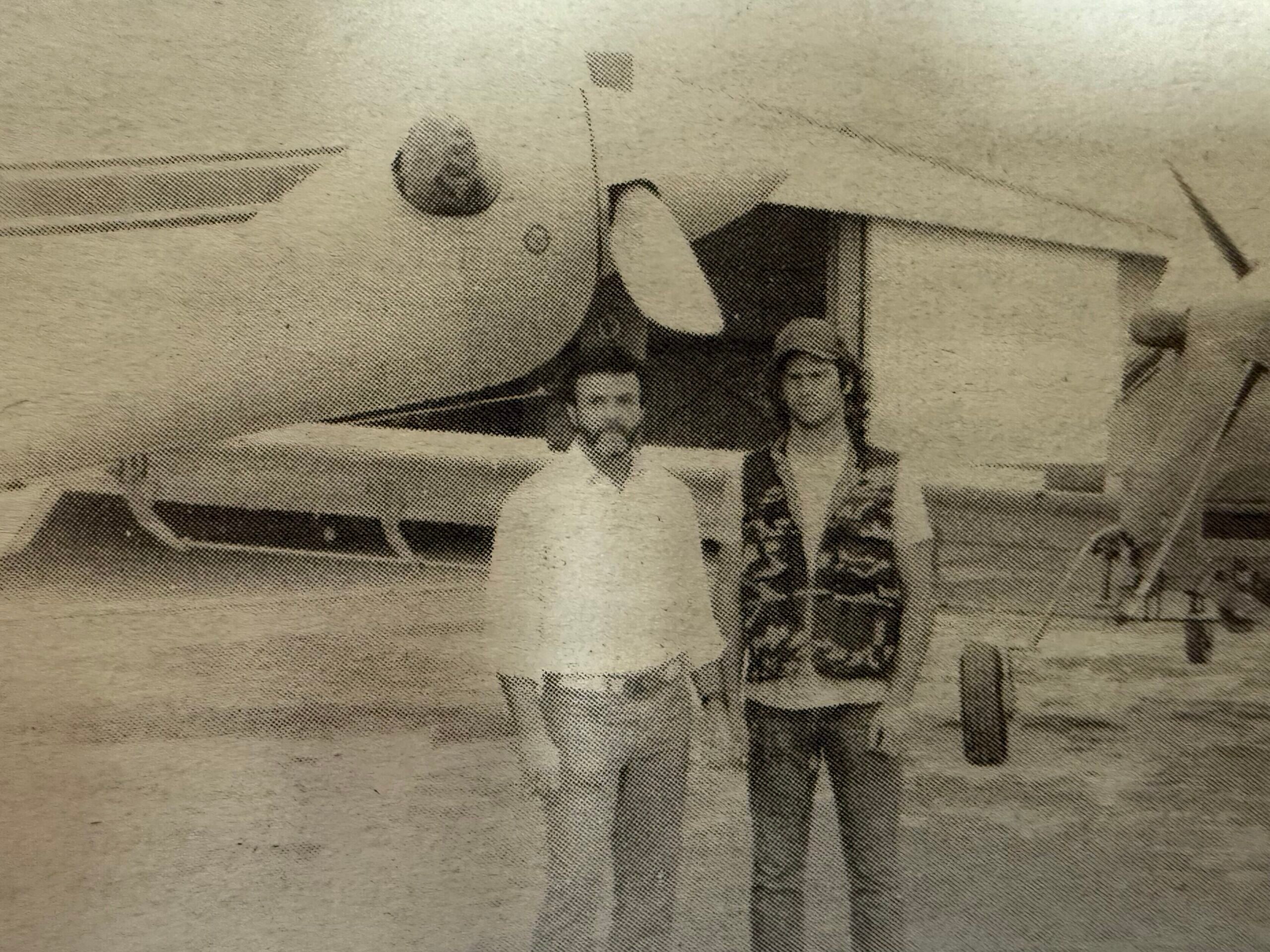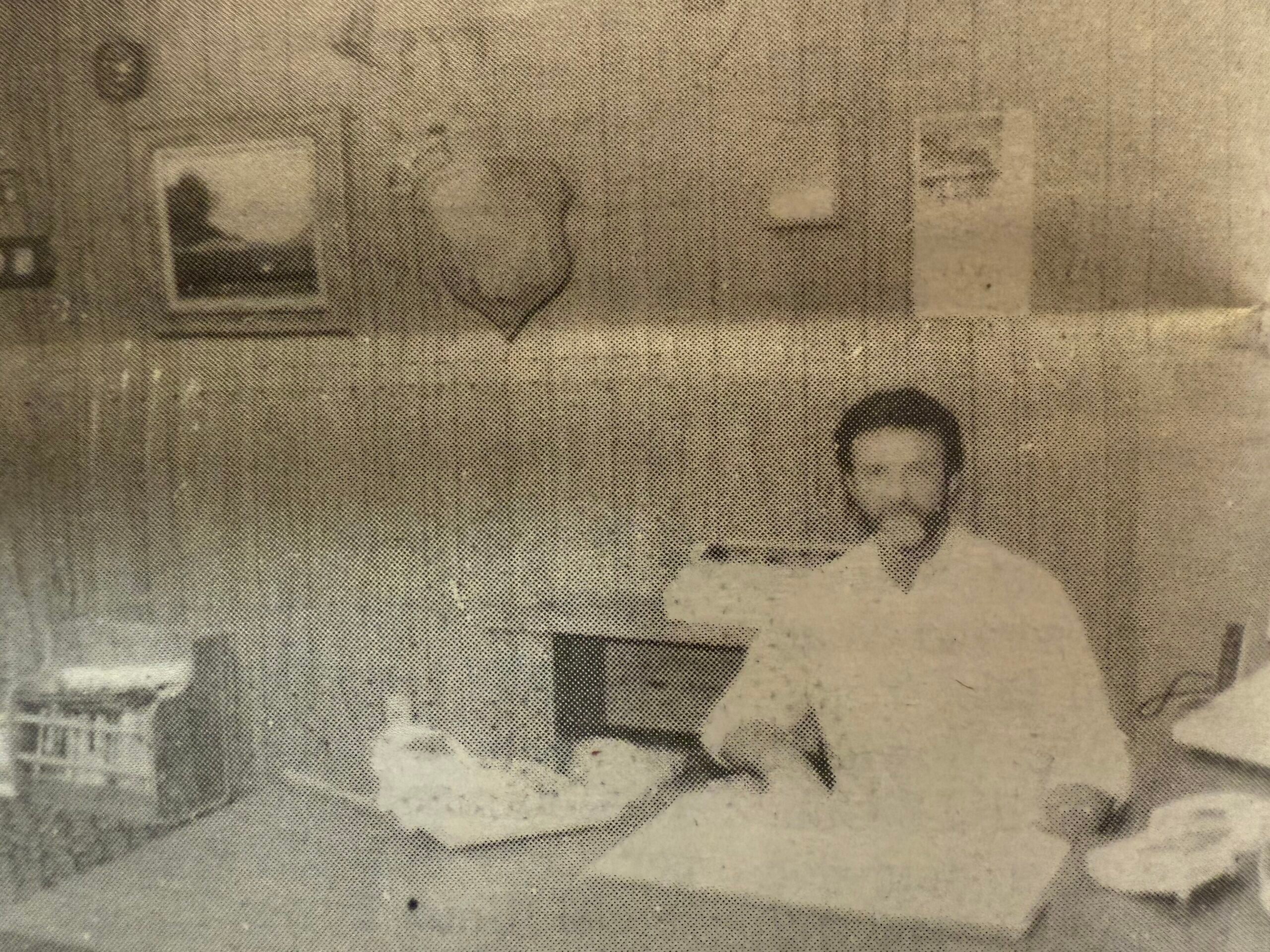Editors Note: In tribute to our cover story this month, which takes Rowland Dusters into their 4th Generation, and in memory of Ben Rowland, our 20 years ago column is one of the first articles in the very early days of AAU, April 1991, when my father, Bill Lavender, visited Ben and Blayne Rowland. Now, 34 years later, I have the opportunity to let history repeat itself. Enjoy! - Graham
by Bill Lavender
Circa April 1991
After the Texas Agricultural Aviation Association convention in Austin, Texas last January, I headed out for the Rio Grande Valley. I had conferred earlier with Grant Lane, of Lane Aviation Rosenberg, Texas about putting me on an operator in the Rio Grande Valley that would be of interest to my readers. He recommended Rowland Dusters from Laser, Texas.
Rowland Dusters is a third generation ag flying operation located in the northern end of the Rio Grande Valley. Ben Rowland, Jr. is the soft-spoken owner and operator of the business. Ben Rowland, Sr. started the business in 1946. Now Blayne Rowland, Ben Rowland, Jr.’s son, flys in the operation, making Rowland Dusters a third generation operation.
Rowland Dusters began at Clarksdale, Mississippi in 1946. Mr. Rowland was fresh out of World War II. He had served a an instuctor for the Civil Pilot Training (CPT) sector. Mr. Rowland began his business with a J-3 Cub. He built-up the dust system for the aircraft (see pictures). The J-3 had a hopper made of sack and plywood. The plane carried 250 pound loads. Mr. Rowland left Clarksdale in the winter to follow the season to southern Texas, as many pilots were doing in that day. He set up operation in Raymondville, Texas. Raymondville is a small community 10 miles east of Laser where Rowland Dusters is currently operating, 45 years later! After the first winter Coy Harlson bought the Texas operation from Mr. Rowland, who returned to Clarksdale. Harrison made enough money the first ten days after he bought our Mr. Rowland to pay for the business.
Mr. Rowland built-up another duster in Clarksdale. He worked cotton spreading calcium arsenate and paris green. After a few years he returned to the small town of Laser, Texas in the Rio Grande Valley. Mr. Rowland would follow the season from Mississippi to Texas every year.


In 1965, Ben Rowland, Jr. began his flying career flying J-3 Cubs. The operation progressed to Super Cubs and the number 3 A-Model Snow. This aircraft was built by Leland Snow. The design would eventually become the Ayres Thrush and the designer would develop the Air Tractor. The A-Model Snow was powered by a 240 horsepower Continental tank engine (army surplus). Mr. Rowland eventually finished his career in 235-Pawnees. The year was 1982 at the young age of 75. He is now retired and living in Newellton, Louisiana.
Ben, Jr. moved-up from the 85 horsepower J-3 Cub to the 150 horsepower Super Cub. From these aircraft, the progression went from 235-Pawnees to a 300 horsepower Cessna in 1971, to a Thrush in 1973, to a Turbine AT-400A equipped with a PT6A-20 engine Air Tractor in 1982. In 1987, Ben added the AT-502 Air Tractor to his operation. The AT-502 is serial number 0003. It was the first AT-502 built. Ben bought the Air Tractor before he ever saw it. It is the same Air Tractor Leland Snow used on the introductory brochures. The pictures were taken at Rowland Duster’s airstrip in Laser. Rowland Dusters now operates two turbine Air Tractors, the AT-400A and the AT-502.
Ben runs Rowland Dusters from one strip at Laser in the north end of the Rio Grande Valley. His average ferry is 5-10 miles. He treats sugar cane and cotton as the main crops. These crops constitute 90% of his work. The cotton growers will start planting April 15th. The cotton season will end with defoliation beginning July 15th and finishing by the first of August.
The application rates are 3 to 5 gallons of mix per acre on sugar cane and vegetables. Sometimes these crops require 10 gallon work. The majority of the work is oil work on cotton. The total volume is 1/2 gallon made of cotton seed oil and insecticide. Rowland Dusters furnishes the oil and charges a price for the application plus the cost of the oil.
Ben will fly the AT-502 300 to 400 hours per year. Blayne Rowland, Ben’s son will operate the AT-400A another 250 plus hours. Before Ben added the AT-502 in 1989, he would fly the AT-400 more than 500 hours per year. He added the AT-502 so Blayne could fly the AT-400A and to meet the demand for more acres to treat. Ben expects even more cotton if the price of grain remains low. Rain is also a key factor in the number of hours flown. LaSara has been in a three year dry spell. Good rainfall would mean more hours flown.
Rowland Dusters does very little dry work. Sometimes Ben is required to fly ammonium nitrate or urea. All the fields are flagged weather wet or dry work is done. This is a requirement of the farmers. Although the average field is only 40-50 acres, a farmer will not permit his acreage to be treated without a flagger to mark the passes. The flagging is done by Rowland Dusters from a truck. The truck is equipped with a Cal-An-Acre and radio. The Cal-An-Acre is an electronic device mounted in the truck for measuring the swath widths. The device is interconnected with the wheels and speedometer of the truck.
In the years from 1955 to 1975 the northern end of the Rio Grande Valley was bulging with ag operators. As many as 15 operators would be cutting prices and trying to survive in the Valley. Because of the price cutting, the operators failed and now only Rowland Dusters works the northern part of the Valley. The average grower farms 800-1,000 acres. The success of the Rio Grande Valley farmer is due to trim overhead expenses, high productivity and staying out of the coffee shop, says Ben.
Ben operates his turbine Air Tractors with a full wing span of nozzles. Contrary to the practice of stopping the nozzles 3/4’s of the way out on the boom. Ben installs a nozzle in every position, except under the belly, and extends the boom to the end of the wing. Ben has a total of 96 nozzles on the AT-502 and 84 nozzles on the shorter wing AT-400A.
Curiously I noted to Ben the discrepancy in nozzle configuration to standard practice. Ben said, “We fly as close to the crop as possible. We have a unique situation in the Valley. The wind blows all the time. If you can’t fly in the wind, you can’t spray in the Valley. I figure on a 90 foot swath with the 502. All the passes are flagged and I get good results.” You learn something every day, I thought. Really, it makes sense. The wind will disrupt a good pattern anyway. With this in mind, you may as well use the wind as much to your advantage as possible with as wide a swath as you can.
Because of the wind, Ben often operates at night. Rowland Dusters is the only operation in the Valley performing night flying. Ben charges his growers an additional $1.00 per acre for the advantage of night applications. Even the night operations are plagued with the wind, only not as high in velocity.
Rowland Dusters is truly a family enterprise. From the years when Mr. Rowland operated and Ben grew up in the business, till now with four boys and Ben actively working the operation. Ben and 23 year old son Blayne do the flying in the turbine Air Tractors. Blayne began his career in 1990 with the distinct pleasure of starting his first season in a turbine Air Tractor. A first year pilot could not have a better dream come true. But you wonder how much he has missed by not dragging around an overloaded Pawnee on a hot windy day. The name of the game is to make a living and stay alive. Fortunately for Blayne he has this opportunity with the turbine Air Tractor. I do not know of a single first year pilot who would not sign away his life for a chance to start out in a turbine ag plane. If things were to change, and Blayne found himself in a Pawnee or 600 horsepower Thrush, he would still have the experience to cope, probably better than he would have if he had started out in them. It speaks well of a pilot who can adjust to the speed and power of the turbine and at the same time learn the essentials of first year ag flying. I was lucky enough to convince Blayne, who is a student at Texas A&M at College Station, Texas to write an article about his first year experiences. Look for Blayne’s story about his first year flying in this issue of the AG AIR UPDATE.
The other three Rowland sons are Boyd, 21; Buddy, 25; and Baeden, 19. Boyd designed the computer programs used in the business. Rowland Dusters uses Apple II computer. He helps with loading the aircraft. Boyd soloed last August. Baeden helps with the ground operations. Buddy manages the flagging operations. Buddy is also working on his pilot’s license. If Buddy receives his ticket Ben may have to add yet another turbine ag plane.
There are two girls in the Rowland family, but now they have grown-up and gone their separate ways. The girls were involved with the business while at home. The operation runs smoothly. Much of this is in part for not having to hire outside help. The boys do all the scheduling. Ben and Blayne do all the flying.
Ben told me that the Valley was becoming congested with population growth. He referred to another operator in the Valley who was having problems with the encroachment of residents in the agricultural area. Ben expressed concerned, but felt he Valley was safe from urbanization for maybe another 20 years.
Ben is an active member of the TAAA. In 1989 he received the Outstanding Operator Award, one of the more prestigious awards given by the TAAA. Ben farms 1200 acres of cotton. He also buys and sells used airplanes.
Ben told me he would like to see more articles about Air Tractors and Air Tractor operators. Well, I am working on it Ben by beginning with you! Ben is one of those seemingly quiet fellows you feel very comfortable with from the very start. Ben has seen and known ag aviation throughout his life time. He has successfully taken the industry from his father and is in the process of passing the tradition of ag flying on to his sons. Ben runs a top notch, clean, and professional operation.
Ben offered to let me fly his 502 Air Tractor. Regretfully, I turned him down due to the hard crosswind blowing that day. Actually I had a gut feeling not to accept the offer. With very quick multiplication , I computed the deductible and knew it was more than I cared to spend should I make a mistake. I was even more honored with the invitation after I found out Ben did not carry hull insurance at all!
What confidence!










